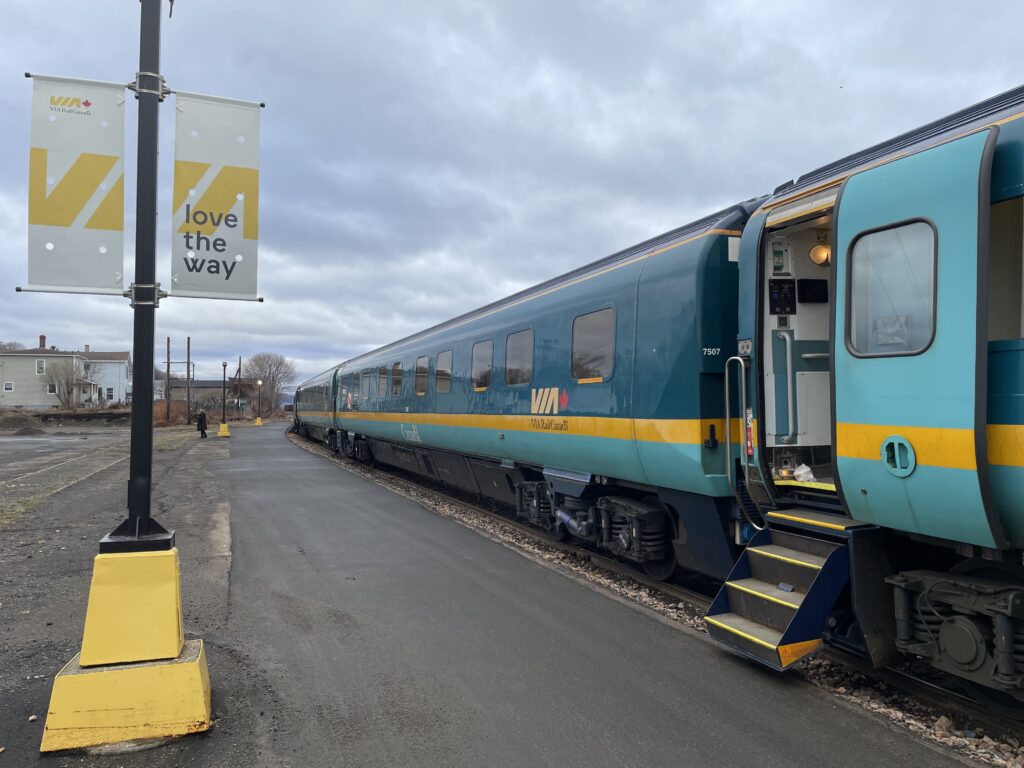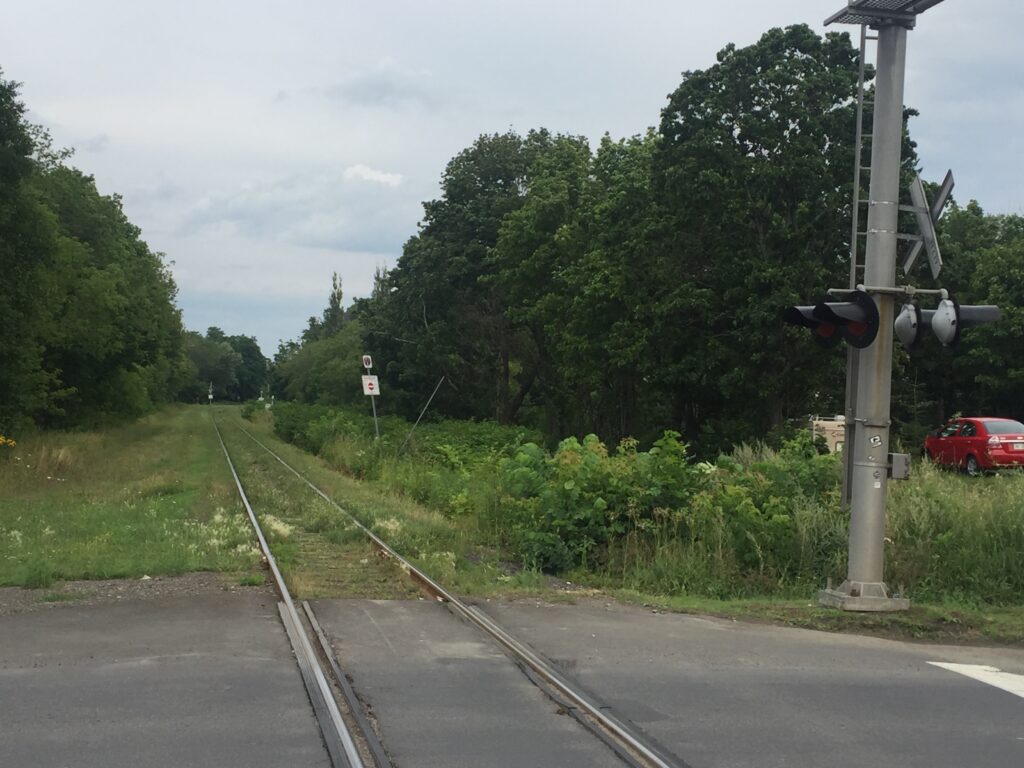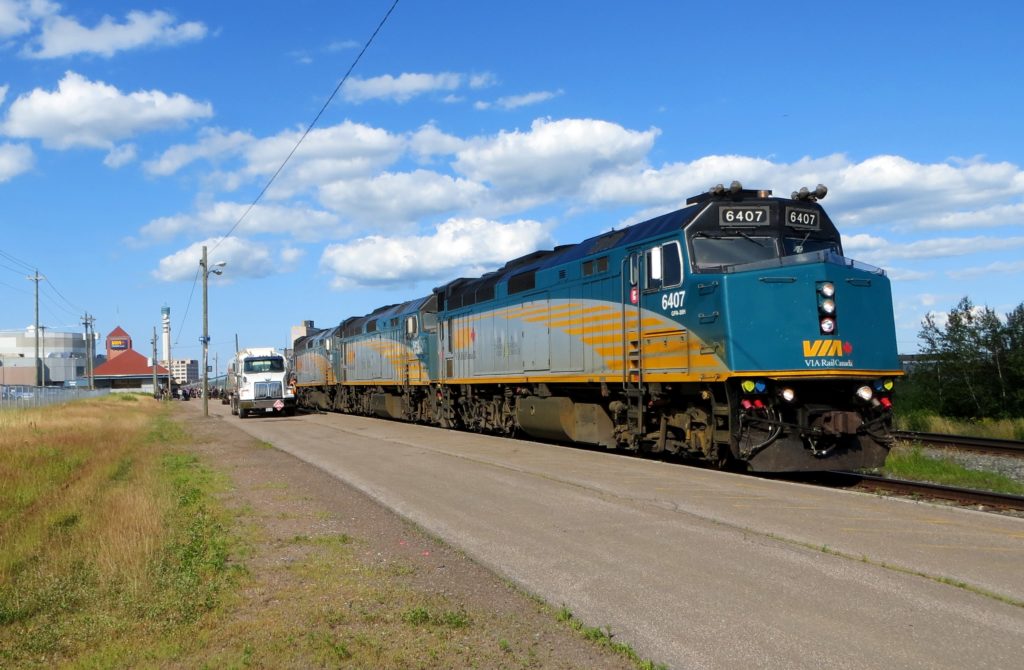
There’s been yet another blow to the last remnant of passenger rail service in the Maritimes. VIA Rail has announced a schedule change effective June 19 that officially adds 90 minutes to the travel time of the Ocean between Halifax and Montreal. The adjustment is being made to compensate for badly deteriorated track conditions on CN’s Newcastle Subdivision in northern New Brunswick.
“VIA is simply recognizing the reality that the speed restrictions imposed by CN make it impossible for the Ocean to maintain its currently published schedule,” says Transport Action Atlantic president Tim Hayman. “As a result, connections to Toronto, Ottawa, and other points west of Montreal have become less reliable. For passengers heading east, it is a frequent occurrence for the train to be running between two and three hours late, and this lack of reliability is clearly unacceptable.
“Unfortunately VIA apparently has no other choice but to pad and adjust its schedule. There is no indication of any plans by the infrastructure owner to restore the track to its previous standards. The result is a total journey time far longer than any in recent memory – more than 23 hours from Halifax to Montreal. This is most certainly not consistent with VIA’s recently-announced strategy of improving passenger rail for all Canadians.”
Effective June 19, the Ocean will be departing Halifax at 1130, instead of 1300 as has been the case in recent years. The extra 90 minutes in the schedule is expected to make connections at Montreal more reliable and allow the eastbound train to maintain its schedule by retiming the overnight meet between the two trains, but will not address the root cause of the problem.

“This is yet another example of how transportation policy of successive federal governments is failing Canadians,” says TAA past president Ted Bartlett. “It will now take nearly five hours longer to travel from Halifax to Montreal than it did 30 years ago. And while we are encouraged to see that Ottawa’s recent budget is making provision to begin replacing the aging fleet of long-haul passenger cars and locomotives, this by itself is not sufficient. There are serious infrastructure issues that must also be addressed, because new equipment will still be subject to the same speed restrictions on this deteriorated track. Frankly, this situation is a national embarrassment.”
Under the revised timetable, the westbound Ocean will require 6 hours and 16 minutes to travel the 186 miles (300 km) of mostly sub-standard track from Moncton to Campbellton – an average speed of less than 30 miles per hour. (In keeping with standard North American railroad practice, track distance and speeds continue to be stated in miles.) Thirty years ago the route was covered in just over four hours, with permissible speeds of up to 75 mph over much of the trackage. A lack of maintenance over the years has resulted in steady deterioration and numerous speed restrictions to ensure safe operation.
“Transport Action Atlantic believes there are three key pillars to ensuring a healthy future for what remains of passenger rail in our region,” says Tim Hayman. “VIA Rail urgently needs new locomotives and cars to replace its old and outdated equipment; there must be investment to restore the track infrastructure to the reasonable standards it once maintained; and the service must operate daily with faster and reliable schedules that meet or exceed those that the Ocean was historically known for.”

Here is the revised (and lengthened) schedule for trains 14 and 15, effective June 19, 2024:

For reference and nostalgia, here’s a look back at the VIA timetable from 30 years ago – effective 24 April 1994 – showing the Ocean departure from Halifax at 1400 and arrival in Montreal at 0815, for a total running time 19 hours, 15 minutes. We’re a far cry from that today, not to mention the absence of the other trains on this timetable!

TAA past president Ted Bartlett was on the Todd Veinotte show on June 4th to talk about this schedule change. You can listen to his interview, beginning at the 10:04 minute mark here: https://halifax.citynews.ca/2024/06/04/the-todd-veinotte-show-june-4th-10am/








